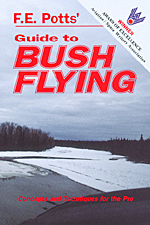Section I: Equipment and Environment
Part I, Introduction: The Terrain
The Northern Bush...
There it is, beckoning, calling to us, its miles and miles of mountains and forests, lakes and rivers, tundra and glaciers, beaches and swamps, waiting, and we respond, seeking its vast solitude, its roadless wilderness free of TCAs and ARSAs, smog and traffic, towers and 9-to-5, much as salmon seek their home waters.
A place where we, as pilots, can truly fly. Spread our wings as we were meant to do.
Yet this land, so timeless in aspect, so primeval, is in reality a land of constant change. For not only are there the gross changes that occur between summer and winter, but there are also subtle changes every bit as serious that occur from day to day and often hour to hour. In the summer, glaciers melt, causing rivers and streams to rise and fall, covering and uncovering gravel bars, changing their lengths and textures, silting and shifting channels. In the winter, snow falls, drifts form, and landing areas appear and disappear with an erratic regularity that takes some getting used to. Before we get into the somewhat unconventional techniques (and mindsets) necessary to operate in this environment, we have to develop an understanding of the terrain, the places where we can -- and cannot -- land.
This knowledge of the terrain is one of the four areas (the other three being judgment, flying technique, and weather) that support our efforts and allow us to practice our dangerous and demanding profession with a reasonable degree of safety.
For, of course, if we fail in any of these areas, we do not survive for long.
